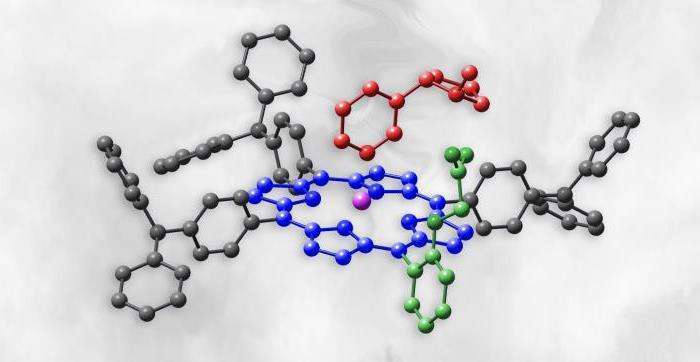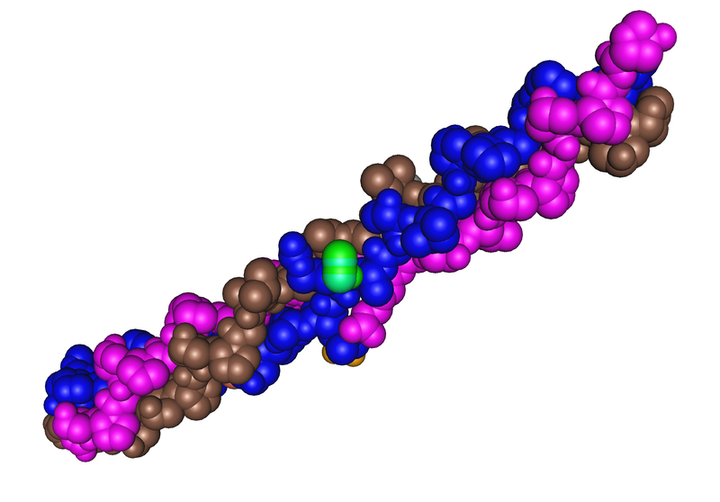Polymers are special substances that scientists rightly call the pinnacle of the evolution of inanimate nature, since it was they who laid the foundation for life on planet Earth. These substances are distinguished by great diversity in their physical properties, structure, chemical composition, as well as the ability to change. Polymers include not only such well-known materials as plastic, but also protein polymers, which are the building material for the human body, various polysaccharides (for example, cellulose), DNA, in which the heredity code of living beings is programmed.
It was thanks to the appearance of protein polymers on the planet that inanimate matter was able to perform such functions as self-reproduction, transmission of hereditary information, reproduction and replication. Their ability to change allows nature to make adjustments to DNA through natural selection.
What are polymers?
It is a large molecule composed of smaller molecules linked to each other by strong covalent bonds. Polymers can be one-dimensional (linear molecule consisting of units), two-dimensional or three-dimensional.
In inorganic chemistry, the structure of many silicate minerals can be considered as one-, two-, or three-dimensional polymers. For example, cialides are a kind of molecular "sieve" through which water is filtered before it enters the apartments of residential buildings. Cialide is a three-dimensional material that looks like an openwork network of luminosilicate units.
There are two types of synthetic polymers: thermoplastic and thermoset. Thermoplastic (polyethylene, polystyrene) are able to withstand repeated processing at high temperatures, since heating does not change their structure. When heated, thermosets lose their original structure, which can no longer be restored.
Refers to widespread polymers and plastic, which is an alloy of various hardeners, plasticizers, stabilizing agents. The scope of plastics is huge – they are indispensable in aircraft engineering, dentistry, the space industry and everyday life.
Polymers are organic substances
In organic chemistry, polymers are overwhelmingly one-dimensional. These organic chains may be unfolded or coiled. For example, fibrillar proteins, such as collagen, which make up human tendons and a third of its protein mass. Collagen has great strength and consists of one-dimensional chains.
Watch a video about what polymers are.
Organic polymers – proteins can be globular (one-dimensional chain coiled into a ball – "globule"). In the body, one of the important biological functions of protein polymers is enzymatic. Globular proteins are a catalyst – inside each such "coil" there are special centers with increased activity, where chemical reactions occur, which are accelerated by the protein matrix.
Protein chains can be connected by strong hydrogen bonds, which form strong three-dimensional structures, such as keratin, silk or cellulose. Cellulose is found in the bark of trees and bushes and is the most common solid polymer in the world. Starch is similar to cellulose, which dissolves in water and is absorbed by the human body. You need to know that cellulose and starch are the same chemical substance in the formula, but different in structure.
In a number of organic molecules of living beings, the mass, size and number of functional groups are insignificant. There are macromolecules that form tissues or store genetic information. In some cases, these molecules are polymers. For example, complex carbohydrates are polymers of elemental sugars. Proteins are polymers of amino acids, while the molecules that store the genetic code – RNA and DNA – are polymers of nucleotides.
The composition of hair, feathers and wool is based on the substance keratin, which is also considered a polymer. The outer skeletons of arthropods, the most common representatives of the animal kingdom, consist of a polymer of chitin.
Deciphering the structure of protein polymers
Now special importance is attached to deciphering the structure of proteins. Proteins have several levels of structures:
- primary – a direct chain of monomeric blocks;
- secondary – pieces of the protein structure, packed into standard units (helices, globules, sheets);
- tertiary – a combination of several standard units in space;
- quaternary – when several protein molecules are intertwined together
Using the starting model – the primary structure of the protein, you can calculate its minimum energy. Researchers look at what it folds into in space to ensure the greatest stability and thus determine the amount of minimum energy.
An ordinary protein molecule is very complex – it consists of a hundred amino acids and has a huge number of degrees of freedom. If someday humanity learns to accurately and quickly predict the structure of a protein from an amino acid sequence, then this will make it possible to make great progress in solving many medical and biological problems.
After all, it is violations in the structure of the protein that often lead to various diseases. Such diseases are called molecular diseases and several thousand have been discovered at present. Molecular include: Alzheimer’s disease, alimentary dystrophy, sickle cell anemia and many others.
By deciphering the structure of the protein, we can understand what kind of medicine can cure these diseases. Experimentally calculating the structure of a protein is a very difficult and time-consuming task. If it were possible to precede it theoretically, it would allow to accelerate progress in biology and medicine.
The very first structure of a protein was deciphered, the molecule of which contains only two polypeptide chains (21 and 30 amino acid residues, respectively). This simple protein was bovine insulin. Now scientists are able to decipher the structure of only small proteins of 30-40 amino acid residues and plan to expand it to 100-200 over time. At the moment, this is the main task of biology in the world.


